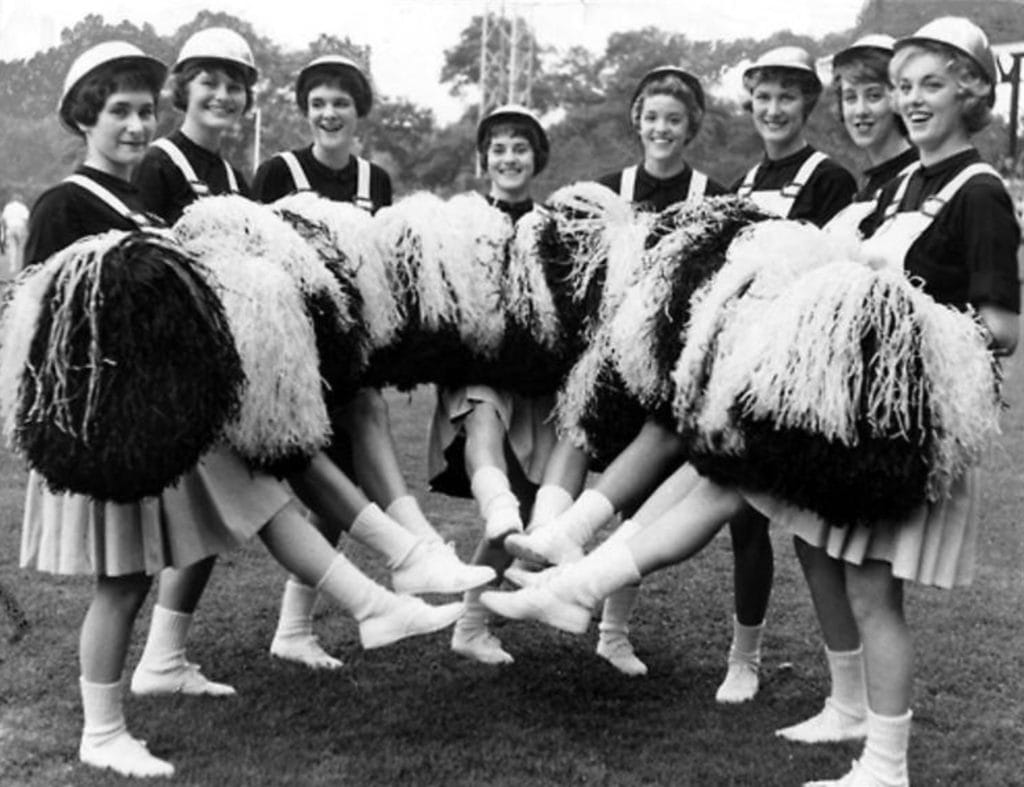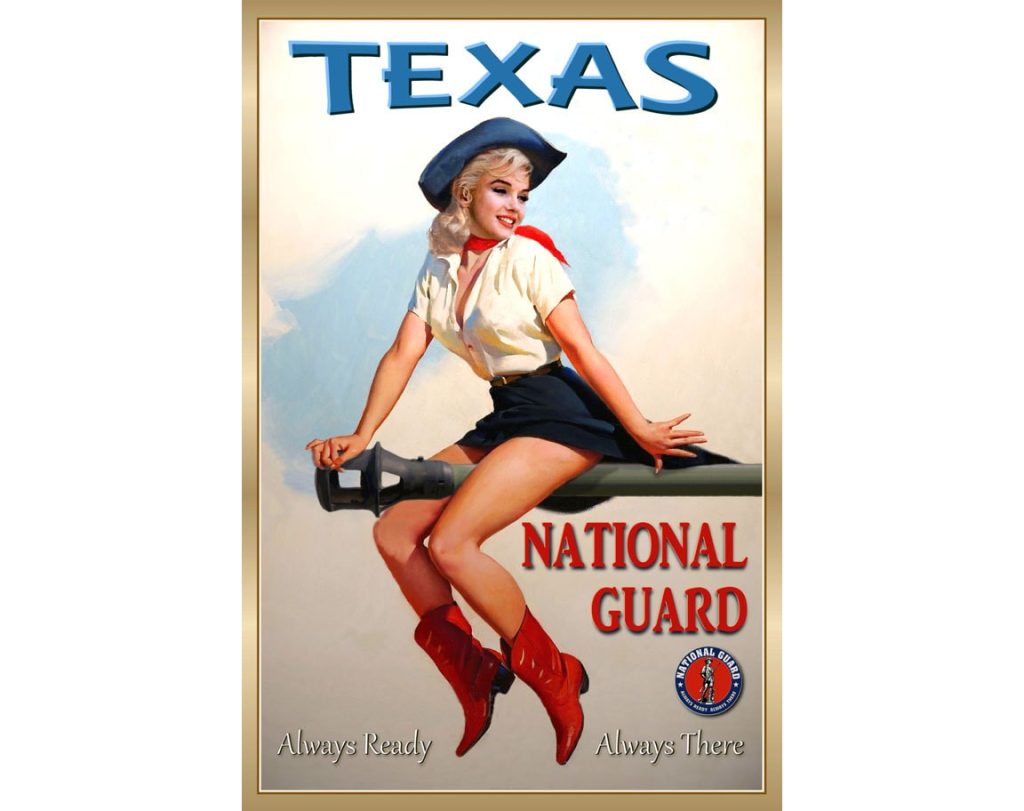With all the progress in society pushing for equality across all genders, races and sexualities, the male gaze is still widespread across Hollywood, music videos and many other forms within society. The term “male gaze” comes from the British feminist film critic Laura Mulvey in her 1973 essay, Visual Pleasure and Narrative Cinema. Laura says “The determining male gaze projects its fantasy onto the female figure, which is styled accordingly.” (Mulvey, 1975). She projects that in the media it objectifies women and in a way identifies their relation to a male character, whether it be a character or nowadays the audience. In a way, it’s a way to dehumanise women and present them as an object of men’s desire (Vanbuskirk, 2022).
From the propaganda of WW2 to the rise of Hollywood, they followed the tune of the Male Gaze by putting the “Ideal” woman’s image and characteristics into everyone’s heads. This at the time coincided with the thought of what a woman is and what they should be laying key characteristics. This in turn cornered both women on what they should be in society.
There isn’t a clear date as to when the Male Gaze was throughout but I would argue it has been a cornerstone in society for centuries. In the earlier and mid parts of the 20th century, The Male Gaze was as strong as ever with values that were held with patriarchy being more of a thing than ever (Bilsing, n.d.). Despite women having the ability to vote, a lot of the patriarchy was still deeply rooted. It was deeper than a political problem but a societal problem with females being taught to have the characteristics of staying at home, having kids, raising children, doing whatever the man says and more. Within all these images the clear characteristics of women are to be appealing towards men and being obedient. This was represented everywhere in society and even in propaganda for war. The use of women within the propaganda was a success as it made many men enlist in the army and used the woman within its propaganda as the country itself, using beauty as a way to pull in more men for the army (Bilsing, n.d.).

Transformers 
Black Widow
In the modern age and thanks to a lot of push and change within society itself, this patriarchy is much less common and is no longer the norm in society. Despite this, the male gaze is still evident in movies and a few parts of society. There are countless examples of this within movies with characters being overly sexualised, music videos objectifying women and even a lot of other things that you don’t realise at first. In Hollywood and big movie theatres, this is pushed by the directors and the production team to make their female characters more sexualized for more talking points and because of that more money.
We can see that this is the case in the modern age a lot of people (particularly women) use this to their advantage on social media or Onlyfans where they release thirst traps or sexual content of themselves and many people (especially men) watch or even pay to see this content. For content purposes, they want to be objectified and devalue themselves by showing their private parts online and anyone can have access to their content as long as they pay some sort of money (Lumen, 2023).

NFL Cheerleaders in the 1950s 
NFL Cheerleaders Now
At first, I didn’t realize but cheerleaders over the years have become more sexualized over the past couple of years. Both pictures are of the NFL cheerleading teams, one being from the 1950s and the other being from the present day. This all reinforces that The Male Gaze is still in our faces as the higher-ups have now issued cheerleaders much more revealing clothes which in turn the cheerleaders have to accept to get the role (Lindsay, 2013).
References
Bilsing, T. (n.d.).┬ĀEnterText 6.2 Tracy E. Bilsing: Mors ab Alto 12. [online] Available at: https://www.brunel.ac.uk/creative-writing/research/entertext/documents/entertext062/ET62BilsingED.pdf.
Lindsay (2013). Pageants, Dance, Cheerleading, and Sexual Objectification: ItŌĆÖs Nothing to Cheer About. [online] More Than A Body. Available at: https://www.morethanabody.org/pageants-dance-cheerleading-and-sexual-objectification-its-nothing-to-cheer-about/.
Lumen, A. (2023). OnlyFans and Feminism: Empowerment or a Step Backward? [online] Medium. Available at: https://medium.com/@arialumen/onlyfans-and-feminism-empowerment-or-a-step-backward-9110263d2901.
Mulvey, L. (1975).┬ĀVisual Pleasure and Narrative Cinema. London Afterall Books.
Vanbuskirk, S. (2022).┬ĀWhat Is the Male Gaze?┬Ā[online] Verywell Mind. Available at: https://www.verywellmind.com/what-is-the-male-gaze-5118422.
ŌĆī
ŌĆī
ŌĆī
ŌĆī





I very like this blog post and the cheerleader costume change example uses a very appropriate theme. Male gaze under the female image is sexualized, many films in the shooting of women are focused on the body parts, to bring visual pleasure to the audience, thereby increasing the box office rate, which is not only sexualized more in fact, but also in the objectification of women. The change of cheerleading costumes also further reflects that the male gaze has not been solved. I want to say that although women have begun to break the stereotype in recent years, for example, through Barbie movies to convey that women are free and independent individuals, they have not completely broken the bondage. It is still a big problem to break the male gaze, and it still needs to inject more attention and voice from society and people.
I really enjoyed this blog post, especially the focus on NFL cheerleaders. It is somewhat alarming how much more revealing the outfits have become in recent years. Especially since we are aware of the male gaze. Football is a perfect example of how the male gaze can be applied. A scenario where men (the players) are portrayed as strong. While cheerleaders stand on the side for the benefit of the men. While also wearing revealing outfits that are attractive to the heavily male-based audience.
This blog post was really easy to read and understand which is great. I like how you mentioned how women get sexualised in movies and in cheerleading, I never even saw cheerleaders back in the day but seeing that comparison is actually crazy to see the difference in appearance. Overall, you have a clear understanding of the male gaze and explained it very well.
I really like your blog. Your narration is logical and the accompanying pictures make it easy for people to understand and make reading interesting. I learned from your article that women were not objectified in every period of history. But after some special events, the status of men rose rapidly, and then affected the later generations for a long time. But I believe that now women are slowly waking up and fighting for equal rights between men and women.